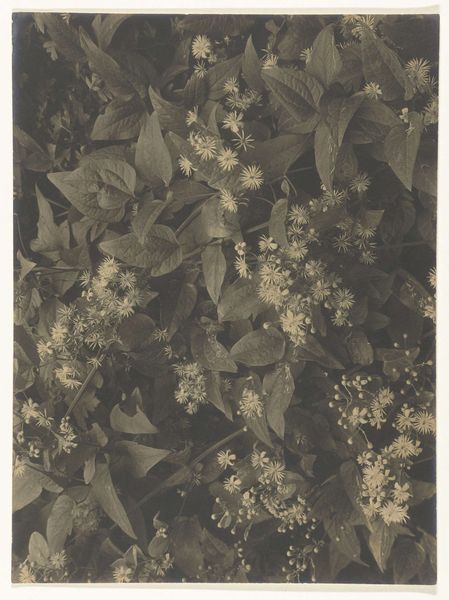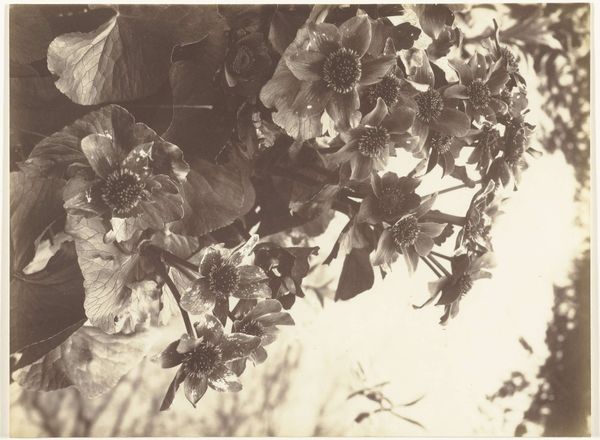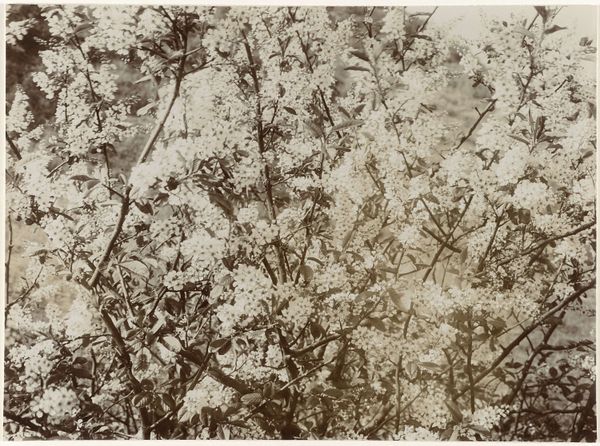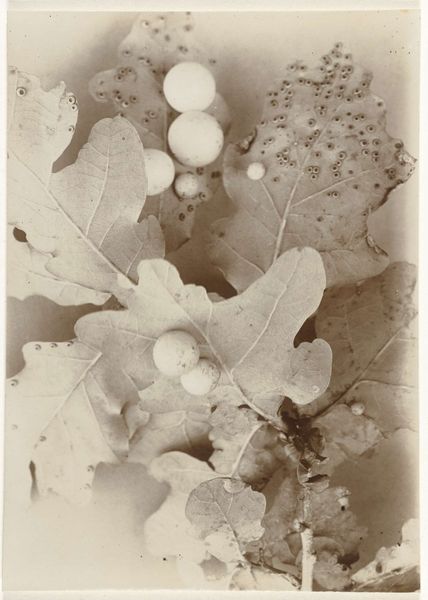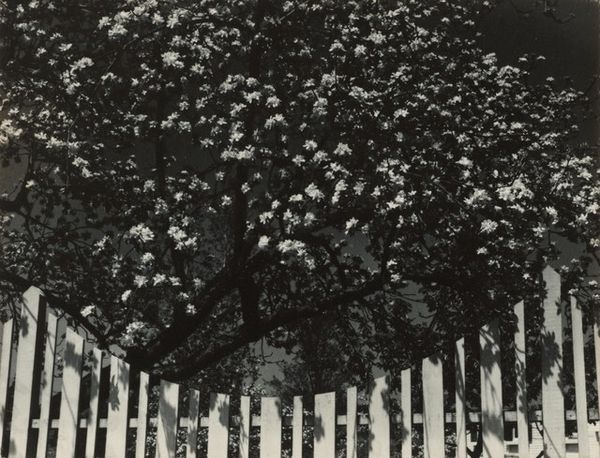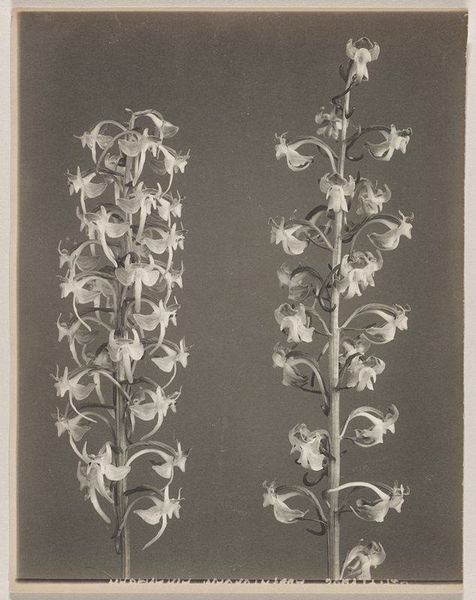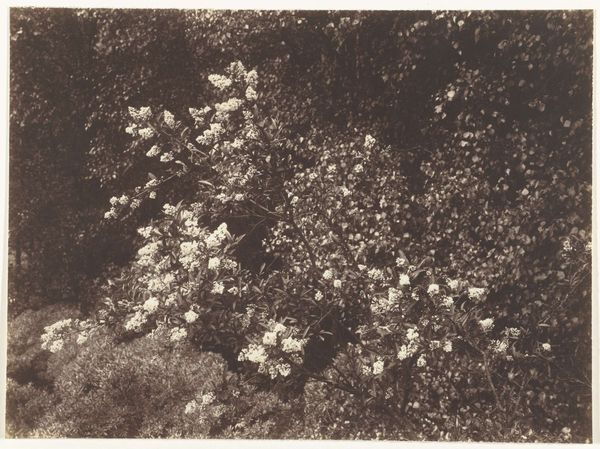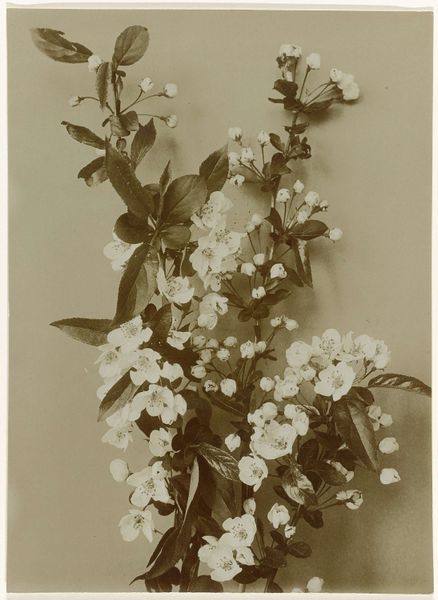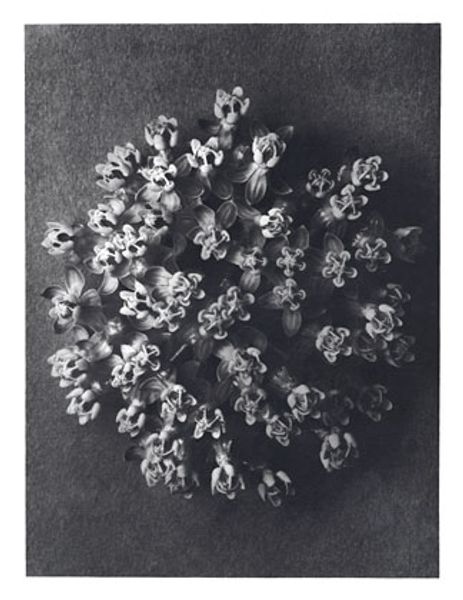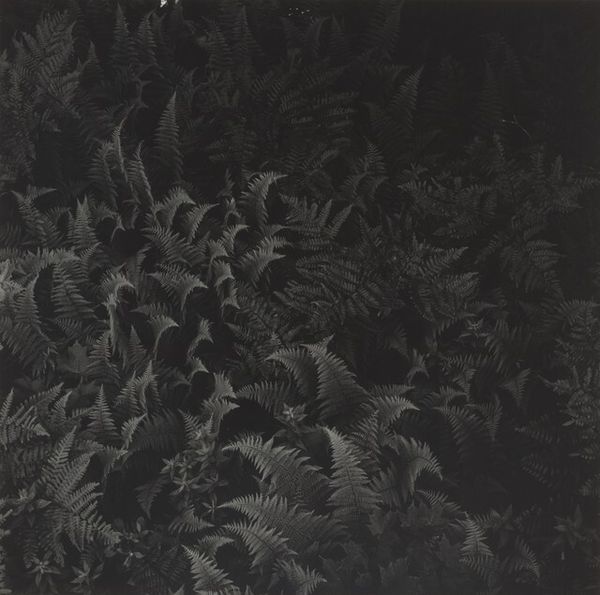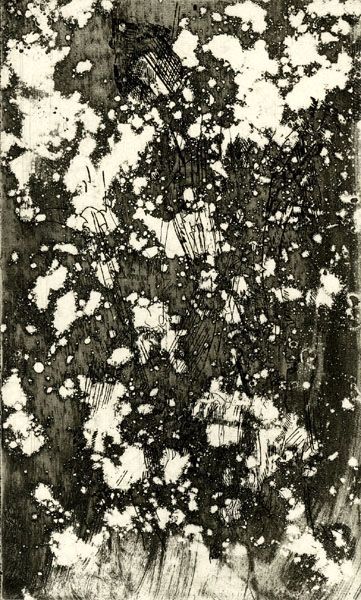
photogravure
#
natural stone pattern
#
rippled sketch texture
#
naturalistic pattern
#
natural shape and form
#
photogravure
#
germany
#
organic shape
#
organic pattern
#
abstract nature shot
#
natural texture
#
pattern in nature
#
organic texture
Dimensions: 10 3/16 x 7 5/8 in. (25.88 x 19.37 cm) (image)12 5/16 x 9 1/2 in. (31.27 x 24.13 cm) (sheet)
Copyright: No Copyright - United States
Editor: Here we have Karl Blossfeldt’s photogravure, "Achillea Millefolium (Milfoil)," created before 1928. I'm struck by the sheer density of the flowers, and the way the photogravure emphasizes texture. What do you see when you look at this piece? Curator: What immediately grabs my attention is the artist's choice of photogravure, a process involving labor-intensive etching and printing. It allowed Blossfeldt to disseminate these images widely, transforming the common milfoil into a commodity, an object for mass consumption and, dare I say, aesthetic contemplation. The serial nature of printmaking also raises questions about the artist's relationship to the subject – is he elevating the milfoil, or domesticating it for a bourgeois audience? Editor: That’s an interesting perspective. I was focused on the formal qualities, like the composition and the use of light. Curator: The composition *is* striking, but how does the medium itself influence our perception? Think about it: photography at the time was becoming increasingly accessible, intertwined with industrial processes. Blossfeldt’s choice isn’t simply about aesthetic preference. He's engaging with the very mechanics of representation and reproduction. How does the mechanization relate to his botanical subject matter? Editor: So, you're saying it’s not just about *what* he photographed, but *how* he chose to reproduce it. Almost as if the print itself becomes part of the subject. Curator: Exactly! And consider the social context: the early 20th century was a period of rapid industrialization. The milfoil, meticulously captured and reproduced, becomes a stand-in for larger questions about nature, industry, and the role of art in a rapidly changing world. What does it mean to make ‘art’ out of a repeatable industrial process? Editor: I never thought about it that way. It makes me consider the value we place on certain materials and processes over others. Curator: Indeed. It's a powerful reminder that art isn't created in a vacuum, but rather emerges from a complex interplay of materials, techniques, and socio-economic forces. Editor: I’ll definitely look at photogravures differently now. Thanks for the insight!
Comments
No comments
Be the first to comment and join the conversation on the ultimate creative platform.
